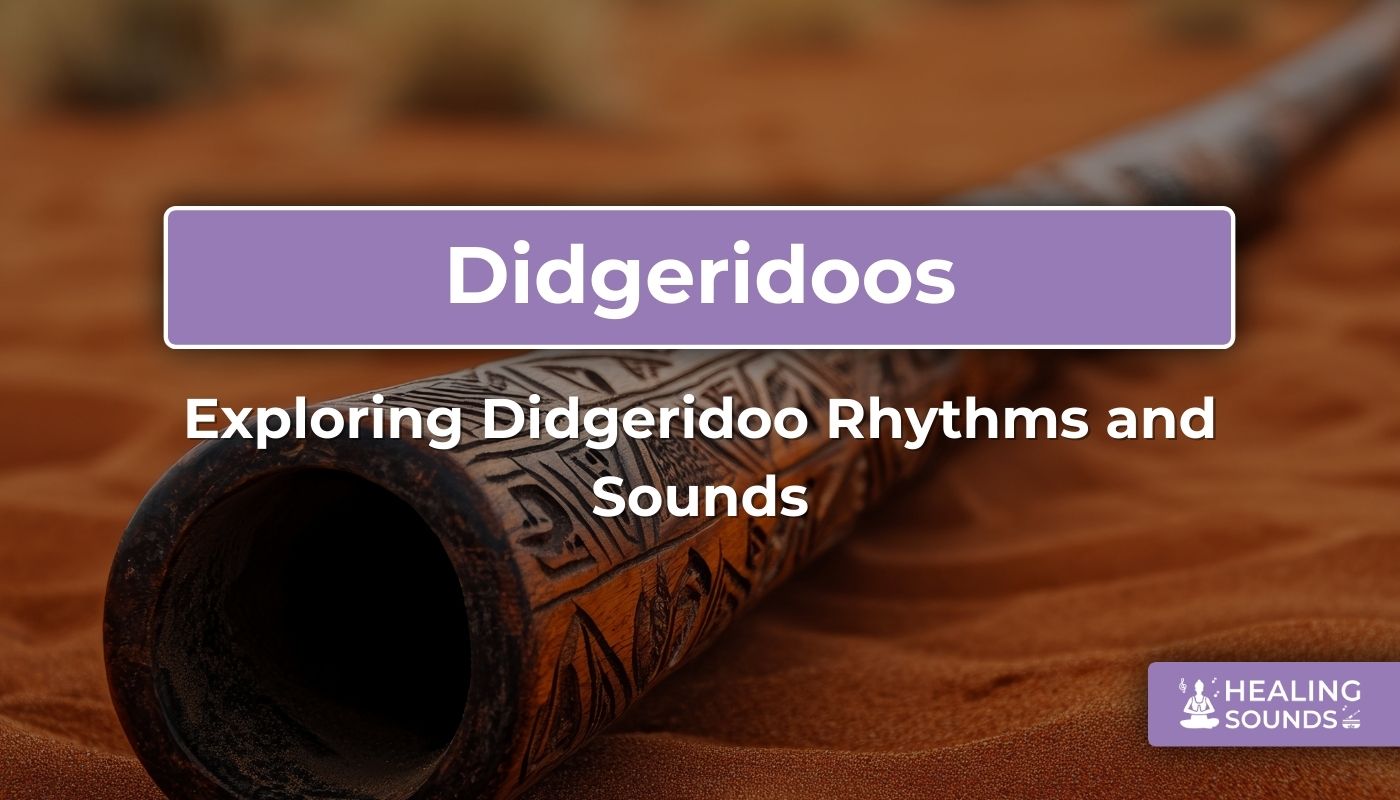The didgeridoo is far more than just a musical instrument; it's an ancient wind instrument steeped in deep cultural significance, originating from the Indigenous peoples of Australia. Its unique, mesmerising drone has captivated listeners for millennia. This article dives deep into the fascinating world of exploring didgeridoo rhythms and sounds. Understanding these elements can profoundly enrich your musical journey and therapeutic practices, whether you're a curious beginner or a seasoned player seeking new dimensions. Let's explore how to connect more deeply with this remarkable Australian instrument didgeridoo and unlock its potential for creativity and wellbeing.
What Creates the Unique Didgeridoo Sound?
The captivating sound of the didgeridoo stems from a combination of factors. At its core, the sound begins with the player vibrating their lips into the mouthpiece, similar to playing a brass instrument but often looser. This vibration creates a fundamental drone note determined by the length and shape of the instrument's air column.
Traditionally crafted from eucalyptus branches hollowed by termites, the natural variations in the bore shape contribute to the instrument's rich overtones and unique timbre. The player then uses a technique called circular breathing – inhaling through the nose while simultaneously expelling air stored in the cheeks into the instrument – to maintain a continuous drone. This seamless sound is a hallmark of skilled didgeridoo playing and contributes significantly to its hypnotic quality.
Mastering the Fundamental Didgeridoo Sounds
The foundation of playing the didgeridoo lies in producing a clear, steady drone. From this base, a vast landscape of didgeridoo sounds can be explored through subtle manipulations of the breath, mouth, tongue, and voice.
Understanding these basic sound components is crucial for building complex rhythms and soundscapes. It allows the player to move beyond a simple drone and truly start 'speaking' through the instrument, expressing a range of textures and emotions.
Achieving Tonal Variations
While the didgeridoo primarily produces a single fundamental drone note, players can create the illusion of different pitches and add harmonic richness. This involves altering the shape of the oral cavity and the tension of the lips.
- Tighten lips slightly for higher-pitched overtones.
- Relax lips for the fundamental drone.
- Change the shape of your mouth as if pronouncing different vowel sounds (like "eee," "ooo," "aaa") to alter the timbre and perceived pitch.
- Adjust tongue position – moving it forward or backward can emphasize different harmonics.
Mastering these subtle shifts allows you to add melodic contours over the grounding drone, making your playing more dynamic and engaging.
Incorporating Vocalisations and Effects
A significant part of the traditional and contemporary didgeridoo sound involves adding vocalizations and sound effects while playing. This technique layers sounds over the drone, adding texture and complexity.
Players might hum, sing, shout, whisper, or make animal sounds (like the famous kookaburra call) into the didgeridoo while maintaining the drone. These vocalizations resonate through the instrument, blending with the drone to create unique, layered sonic textures often associated with traditional didgeridoo rhythms.

Didgeridoo Australian Instrument for Sound Healing
$179.90 $249.90
Crafted for resonance, this didgeridoo is ideal for exploring deep drones and the therapeutic qualities of sound healing.
Explore This DidgeridooExploring Traditional and Modern Didgeridoo Rhythms
Didgeridoo rhythms are built upon the interplay between the continuous drone, sharp percussive sounds, and vocalizations. These rhythms can range from simple, meditative pulses to incredibly complex, driving patterns.
Learning these rhythms involves coordinating breath control, lip vibration, tongue movements, and vocal contributions. It's a holistic approach that engages the entire upper body and respiratory system.
Basic Rhythmic Pulses
Beginners often start by introducing simple rhythmic pulses over the drone. This is typically achieved using the tongue and diaphragm.
- Tongue Strokes: Using syllables like "taka," "dita," or "doo" by striking the tongue against the roof of the mouth creates percussive accents.
- Diaphragm Pulses: Pushing short bursts of air from the diaphragm can create a pulsing effect ("womp womp") within the drone.
Practicing these basic techniques helps develop control and timing, forming the foundation for more intricate rhythmic work.
Complex Rhythmic Structures
Advanced players weave together various techniques to create sophisticated rhythmic patterns. This can involve:
- Layering multiple tongue strokes and diaphragm pulses.
- Syncopation – placing accents in unexpected places against the steady drone.
- Rapid alternation between drone, overtones, and vocalizations.
- Utilizing pauses and silence effectively within the rhythm.
Exploring these complex structures transforms the didgeridoo into a versatile rhythmic instrument capable of driving music or creating intricate soundscapes.
The Healing Power of Didgeridoo Rhythms and Sounds
Beyond its musical applications, the didgeridoo is renowned for its therapeutic potential. The deep, resonant frequencies and continuous drone have a profound effect on the listener and the player, making it a powerful tool in sound healing practices. Exploring didgeridoo music benefits often leads to discoveries in personal wellbeing.
The low-frequency vibrations produced by the instrument can be felt physically, promoting relaxation and potentially easing muscle tension. Listening to the complex interplay of tones and rhythms can induce meditative states, reduce stress, and calm the nervous system. For the player, the practice of circular breathing itself can improve respiratory function and mindfulness.
Sound therapists utilize the didgeridoo to help balance the body's energy fields, facilitate emotional release, and promote a sense of deep peace and grounding. The primal, earthy tones connect listeners to something ancient and fundamental.
Discover Your Perfect Didgeridoo

Didgeridoo Australian Teak Wood Instrument
$149.90
$209.90
Durable Teak wood offers deep tones, ideal for beginners starting their journey into didgeridoo rhythms. Learn more ➔

Didgeridoo Australian Instrument for Sound Healing - Eucalyptus
$159.90
$219.90
Authentic Eucalyptus wood enhances yoga and meditation with traditional deep tones and relaxing didgeridoo sounds. Learn more ➔

Portable Spiral Didgeridoo - Australian Instrument
$149.90
$209.90
Compact spiral design makes exploring didgeridoo sounds accessible anywhere, perfect for travel and sound therapy sessions. Learn more ➔
Tips for Enhancing Your Didgeridoo Playing
Improving your ability to create compelling didgeridoo rhythms and sounds takes dedication and mindful practice. Here are some tips to help you on your journey:
- Consistent Practice: Even 15-20 minutes daily is more effective than infrequent long sessions. Focus on circular breathing endurance and clarity of sound.
- Listen Actively: Record yourself playing and listen back critically. Also, listen to experienced players (search for Didgeridoo music download or recordings) to understand different styles and techniques.
- Experiment Fearlessly: Don't be afraid to try new sounds, rhythms, and vocalizations. Exploration is key to finding your unique voice on the instrument.
- Focus on Relaxation: Tension inhibits sound production. Practice relaxation techniques for your lips, jaw, throat, and body.
- Learn Basic Music Theory: Understanding concepts like tempo, time signatures, and dynamics can help structure your rhythmic playing.
Didgeridoo vs. Yidaki: Understanding the Difference
While "didgeridoo" is the commonly known term, it's important to acknowledge "Yidaki." Yidaki is the specific name used by the Yolngu people of North East Arnhem Land for their traditional form of the instrument. While functionally similar, Yidaki often have specific characteristics related to their construction and playing style deeply embedded in Yolngu law and culture.
Using the term Yidaki respectfully acknowledges its specific cultural origins, distinct from the more generic term "didgeridoo" which covers various types of instruments inspired by the original. You can learn more about the cultural significance from resources like the Australian Institute of Aboriginal and Torres Strait Islander Studies (AIATSIS).
Conclusion
Exploring didgeridoo rhythms and sounds is a journey into an ancient art form with profound musical and therapeutic dimensions. From mastering the fundamental drone and circular breathing to layering intricate rhythms and vocalizations, the Australian instrument didgeridoo offers a lifetime of learning and expression.
Whether your interest lies in musical performance, sound healing, meditation, or simply connecting with a unique cultural tradition, the didgeridoo provides a powerful medium. We encourage you to embrace the practice, experiment with its sonic possibilities, and experience the grounding and transformative effects for yourself. Discover high-quality instruments at Healing Sounds to begin or continue your captivating didgeridoo adventure.
Frequently Asked Questions about Didgeridoo Rhythms and Sounds
The sound originates from the player vibrating their lips into the mouthpiece. This vibration resonates within the instrument's air column, creating the fundamental drone. The unique timbre is influenced by the instrument's shape, material, and the player's techniques like circular breathing and mouth shape changes.
While a didgeridoo has one fundamental drone note, players create tonal variations and emphasize harmonics (overtones) by altering lip tension, changing the shape of their mouth (like forming vowel sounds), and adjusting tongue position. This gives the impression of different notes and adds melodic texture.
The didgeridoo's healing power is attributed to its deep, resonant frequencies and continuous sound. These vibrations can promote relaxation, reduce stress, calm the nervous system, and induce meditative states. Sound therapists use it for energy balancing and emotional release. Playing it also benefits respiratory function.
"Didgeridoo" is a general term for the instrument class. "Yidaki" is the specific name used by the Yolngu people of Northeast Arnhem Land for their traditional instrument, which often has particular characteristics and deep cultural significance tied to Yolngu law and ceremony.
The sound is produced by the player buzzing their lips into the mouthpiece, creating vibrations that travel down the tube (air column). The length and internal shape of the tube amplify these vibrations and determine the fundamental pitch (drone). Circular breathing allows the player to sustain this sound continuously.

